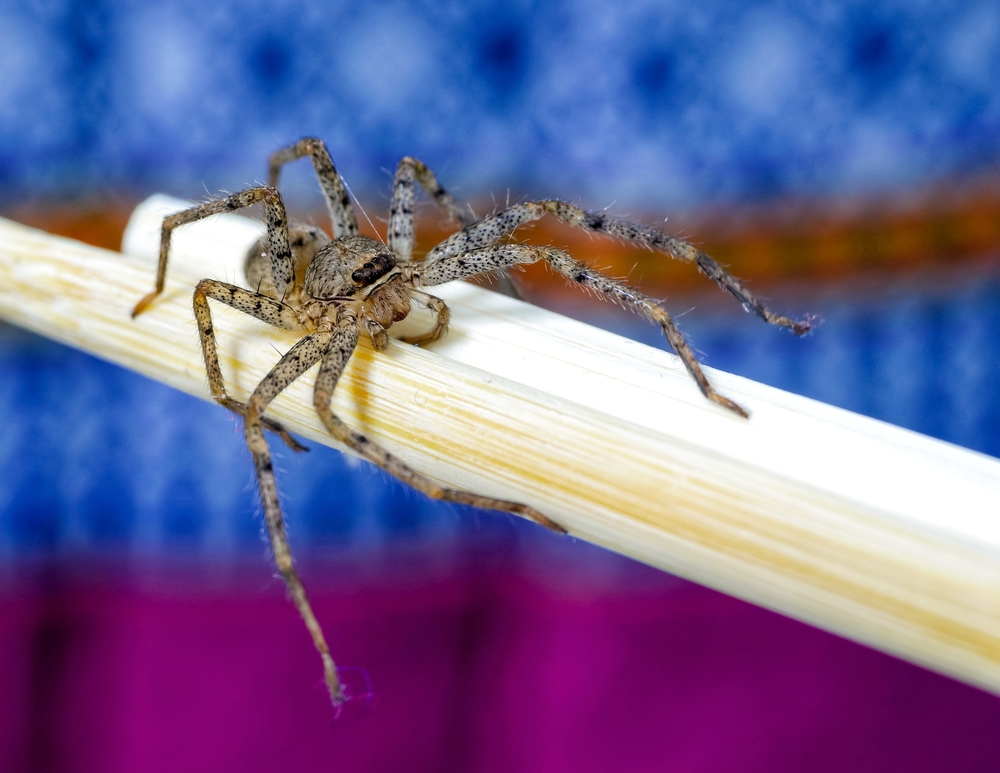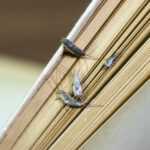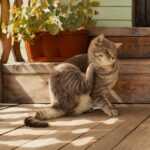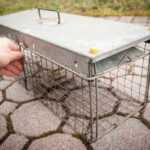How to Identify and Deal with the Brown Recluse Spider
Wondering if you might have Brown Recluse Spiders in your home? This guide helps you identify them, understand their habitats, and know what to do if bitten by a brown recluse spider.
- The brown recluse spider can be identified by its violin-shaped marking and unique eye arrangement of six eyes in three pairs.
- To prevent infestations, it is crucial to maintain cleanliness in both indoor and outdoor spaces, particularly in dark, undisturbed areas where these spiders are likely to hide.
- Prompt first aid and professional medical care are necessary for treating brown recluse spider bites, as severe reactions can lead to significant health complications.
Recognizing the Brown Recluse Spider
Identifying brown recluse spiders ensures your safety and peace of mind. These spiders, scientifically known as Loxosceles reclusa, are notorious for their venomous bites. They range in color from light to dark brown and have long, thin legs that are equally colored. Typically, their body length does not exceed half an inch, making them a notable recluse species.
What sets them apart from other brown-colored spiders is their distinct physical features. Here are some detailed characteristics.
Violin-Shaped Marking
The most definitive characteristic of a brown recluse spider is the violin-shaped marking on its back, often leading to its nickname, the violin spider. This marking is dark brown, with the neck pointing backwards towards the abdomen.
This marking distinguishes it from other similar-looking spiders. Spotting this marking likely indicates a brown recluse.
Eye Arrangement
Another unique feature of brown recluse spiders is their eye arrangement. The brown recluse is different from most spiders. While most have eight eyes, it has six, which are arranged in three pairs. These pairs form a semicircle on their fused head, making the eye pattern a more definitive diagnostic feature when identifying these spiders.
Their unique eye arrangement sets them apart from other spiders.
Common Habitats
Understanding where brown recluse spiders are commonly found can help you avoid encounters. These spiders prefer dark, undisturbed environments. Indoors, they are typically found in places like attics, basements, and storage closets where they can remain hidden. Outdoors, they thrive in dry, warm areas such as barns and sheds.
Understanding their preferred habitats helps in making these areas less inviting.
Indoor Locations
Indoors, brown recluse spiders seek out hidden locations. They often hide in attics, basements, and storage areas, particularly in cardboard boxes and behind furniture. Crawl spaces and wall cavities are also common hiding spots.
Regular decluttering and cleaning can significantly reduce the chances of a brown recluse infestation, keeping these spiders at bay.
Outdoor Locations
Outside, brown recluse spiders and other recluse spiders are commonly found in hidden locations such as barns, sheds, and gardens. They thrive among natural debris like piles of leaves or woodpiles. Regularly clearing these areas and maintaining your outdoor spaces can help reduce the likelihood of encountering these spiders.
Awareness of these outdoor habitats helps keep your surroundings safe.
Behavior and Life Cycle
Understanding their behavior and life cycle is crucial for effective control. These spiders bite when they feel threatened or disturbed. They are primarily nocturnal hunters, relying on speed to catch their prey.
Knowledge of their hunting, feeding habits, reproduction, and lifespan offers valuable control insights.
Hunting and Feeding
Brown recluse spiders primarily hunt soft-bodied insects like crickets and moths. Unlike most web weavers, they do not rely on webs to catch prey but instead use their speed and agility.
Their dietary preferences can guide strategies to reduce their food sources and control their population.
Reproduction and Lifespan
Female brown recluse spiders guard their egg sacs until the eggs hatch, which occurs about one month after laying. Each egg sac can contain dozens of eggs, with females capable of producing between one to five sacs, each containing up to 300 eggs.
The lifespan of an adult brown recluse spider ranges from two to four years. Knowledge of their reproductive cycle and lifespan is vital for long-term control and prevention.
Symptoms of a Brown Recluse Spider Bite
Brown recluse spider bites can cause severe reactions due to the potency of their venom. Early symptom recognition significantly improves treatment outcomes. Initial symptoms can be mild, but severe reactions can develop if not addressed promptly. A brown recluse bite can lead to serious complications if not treated in a timely manner. Recluse bites can also result in significant health issues if left untreated.
Awareness of symptoms and response steps is critical for effective treatment.
Initial Symptoms
Initial symptoms of a brown recluse spider bite may include a slight pinprick sensation or may go unnoticed entirely. Within 2 to 8 hours, an irregular red area may develop around the bite site, accompanied by pain and itchiness.
Complications can develop within 24 to 72 hours, including the formation of a bluish sinking patch with a blister and potential expansion of lesions.
Severe Reactions
In severe cases, brown recluse spider bites can lead to necrotic sores that damage underlying tissues. Initial symptoms of severe reactions include burning sensations and blistering in the bite area. In very rare cases, bites can result in systemic reactions, impacting the body beyond the bite location.
Professional medical care is necessary for severe symptoms.
First Aid and Medical Treatment
First aid knowledge and timely medical treatment are critical for brown recluse spider bites. Immediate action can prevent complications and promote healing.
Here are essential first aid steps and the significance of professional medical care.
If bitten by a brown recluse spider, clean the wound with soap and water to minimize infection risk. Applying an ice pack or cold compress can help reduce swelling and numb the pain.
Monitor the bite for serious symptoms and seek medical help if it worsens or does not improve.
Professional Medical Care
Professional medical care is essential for severe brown recluse spider bites. Surgical intervention can potentially worsen outcomes. Antibiotics are advised when there is a confirmed diagnosis of an infection. They play an important role in treatment. For necrosis, Dapsone is a common treatment.
Prompt medical attention helps avoid complications.
Preventing Infestations
Preventing brown recluse spider infestations involves a combination of home maintenance and monitoring. Making your home less inviting and monitoring their presence significantly reduces infestation risks.
Home Maintenance
Sealing cracks and gaps around windows and doors reduces spider entry points, preventing them from entering your home.
Better home ventilation makes it less conducive for spiders. Sealing entry points and improving ventilation reduces their access.
Monitoring and Control
Using sticky traps can help monitor and capture brown recluse spiders as part of a control strategy. Enlisting professional pest management services is recommended for dealing with an indoor infestation.
Effective management of brown recluse spider populations requires monitoring.
Gopher Patrol’s Role in Spider Control
Gopher Patrol specializes in effective spider control services, particularly for brown recluse spider infestations. While their primary focus is on spiders, they also provide information about gophers and their control for property owners facing gopher problems. They emphasize their commitment to customer satisfaction through effective spider control services.
Recognizing the importance of professional pest management ensures a safe, spider-free environment.
Customer Testimonials
Customers like David have reported that Gopher Patrol effectively managed pest problems in properties with prior neglect. Linda noted that Gopher Patrol successfully reduced an overwhelming number of gophers and moles from her property within three months.
Feedback indicates a high level of customer satisfaction with the effectiveness and efficiency of Gopher Patrol’s services.
Gopher Patrol provides pest control services tailored to remove unwanted pests, including brown recluse spiders.
Frequently Asked Questions
What attracts brown recluse spiders?
Brown recluse spiders are primarily attracted to locations with an abundance of small bugs, which serve as their food source. Thus, reducing insect populations in your home can help deter these spiders.
How do you tell if a spider is a brown recluse?
To determine if a spider is a brown recluse, examine its body for a light brown color and a distinctive violin-shaped marking behind its eyes. This identifying feature, however, may not be present in younger spiders.
What are the key identifying features of a brown recluse spider?
The brown recluse spider is identifiable by its violin-shaped marking on the back and its unique arrangement of six eyes in three pairs. These characteristics are essential for accurate identification.
Where are brown recluse spiders commonly found indoors?
Brown recluse spiders are commonly found indoors in attics, basements, storage closets, and behind furniture. Their preference for secluded and undisturbed areas makes these locations ideal for their habitation.
What should I do if I am bitten by a brown recluse spider?
If bitten by a brown recluse spider, promptly clean the wound with soap and water, apply a cold compress to alleviate swelling, and seek medical attention if symptoms worsen.





